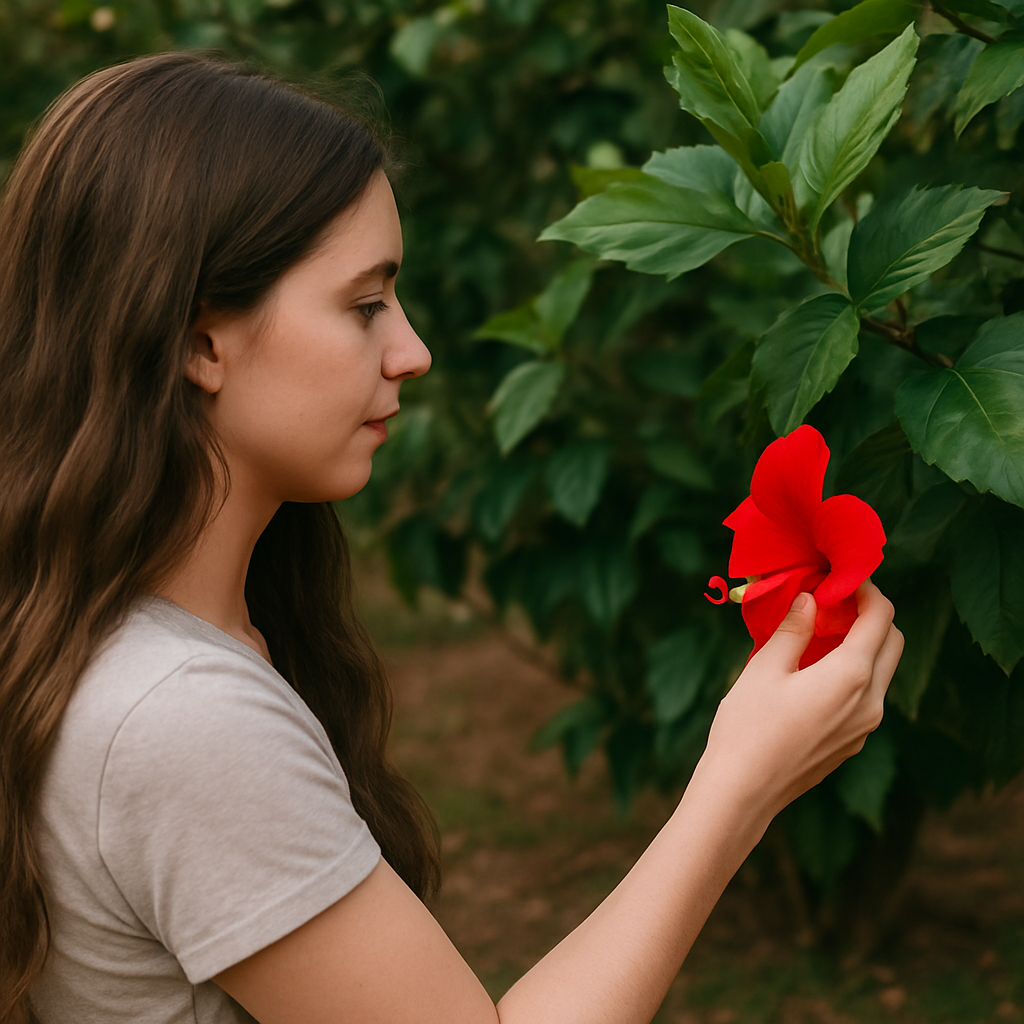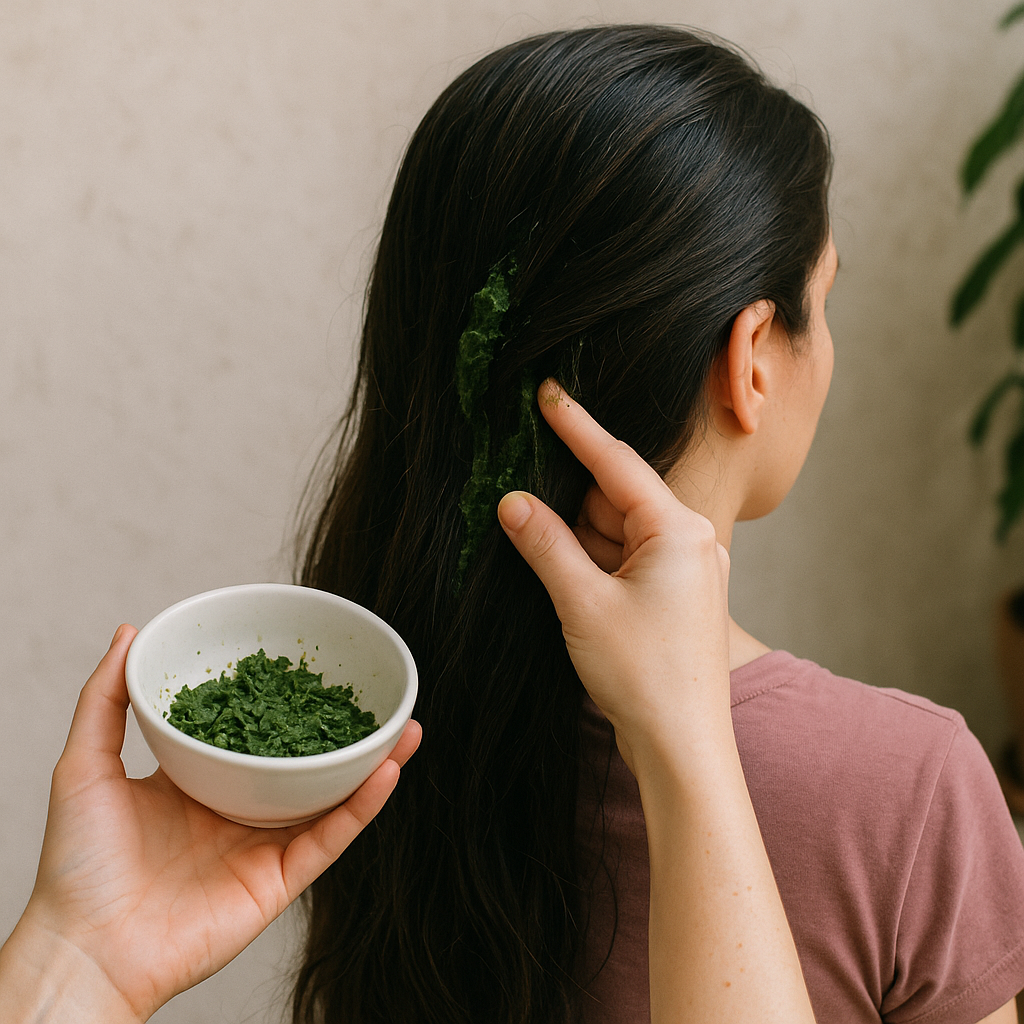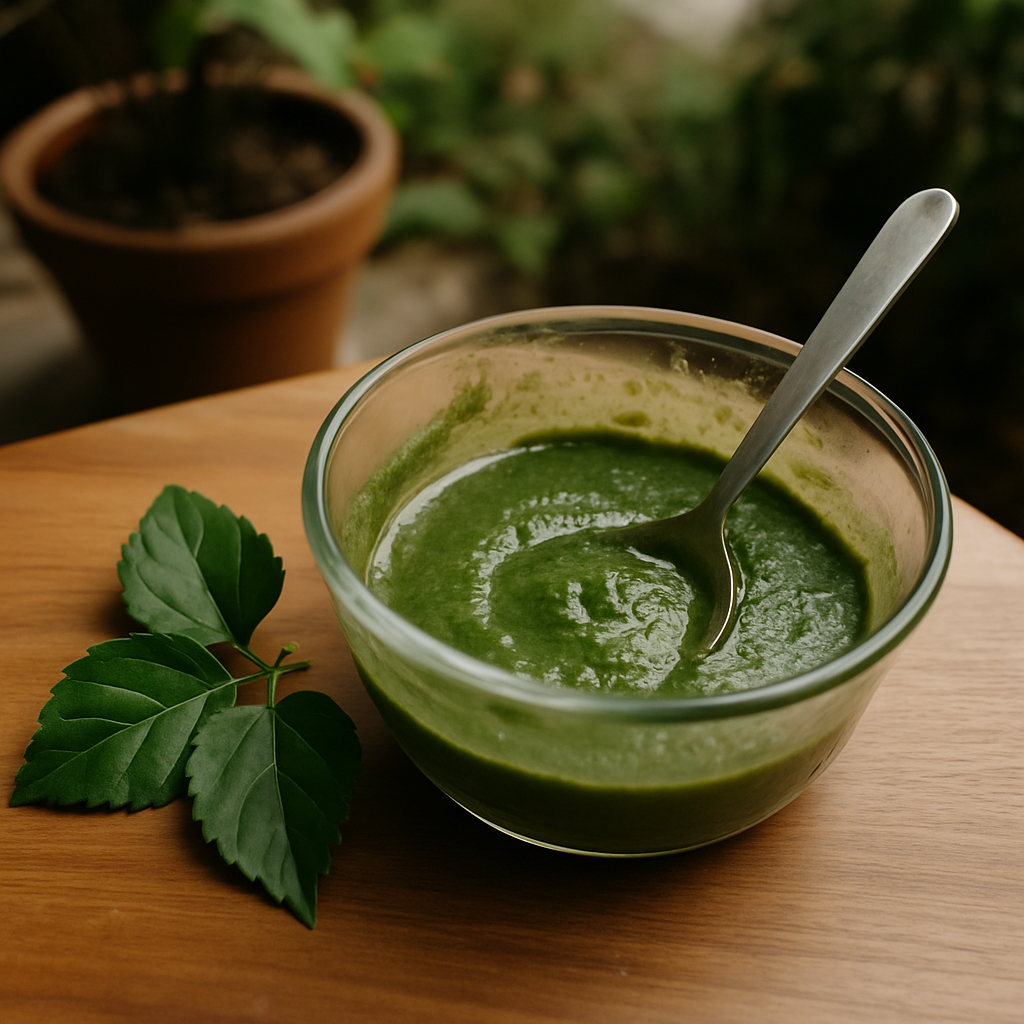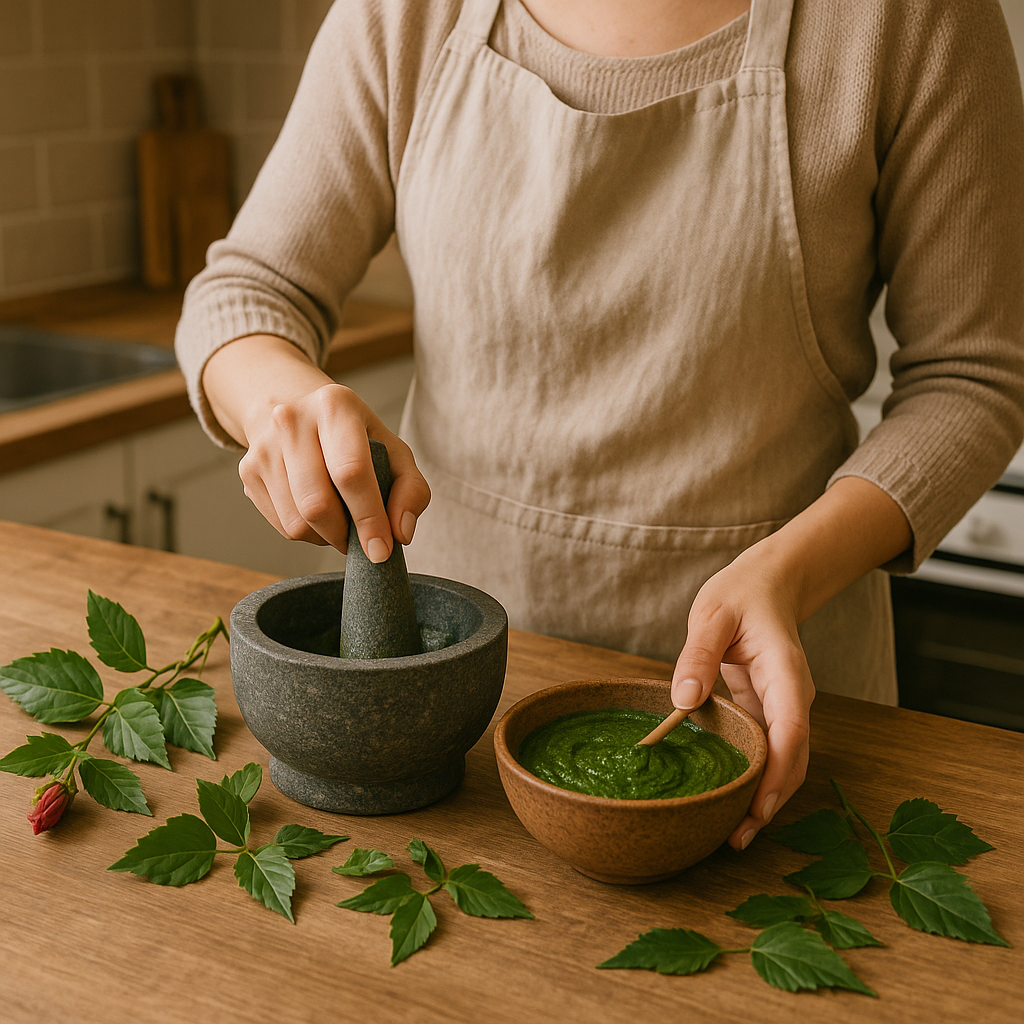Ask Ayurvedic doctor a question and get a consultation online on the problem of your concern in a free or paid mode. More than 2,000 experienced doctors work and wait for your questions on our site and help users to solve their health problems every day.
Shop Now in Our Store
How to Use Hibiscus Leaves for Hair Growth

If you’re searching for natural ways to boost your hair health, you might have heard about how to use hibiscus leaves for hair growth. Hibiscus has been a beloved beauty secret in many cultures for centuries. Its leaves and flowers are packed with nutrients that offer amazing benefits for your hair, from promoting growth to reducing dandruff. But why exactly should you consider adding hibiscus leaves to your hair care routine? And how do you use them effectively?
In this article, we’ll explore the benefits of hibiscus leaves for hair, share easy DIY recipes like the hibiscus leaves hair mask, and explain how to apply hibiscus leaves on hair for best results. Whether you have dry, oily, or normal scalp, you’ll find useful tips to bring natural vitality back to your locks. Plus, we'll talk about some other interesting uses of hibiscus leaves for hair beyond just growth. So, let’s dive right in!

Why Use Hibiscus Leaves for Hair Growth
Hibiscus leaves are often overshadowed by the more famous hibiscus flowers, but both are powerful when it comes to hair care. You might wonder: can we use hibiscus leaves for hair on a daily basis? Before answering that, let’s look at the benefits of applying hibiscus leaves on hair and why this plant deserves a spot in your beauty cabinet.
Benefits of Applying Hibiscus Leaves on Hair
One of the key benefits of hibiscus leaves for hair is their ability to stimulate hair growth. They are rich in vitamins like vitamin C and amino acids that nourish the scalp and strengthen hair roots. This reduces hair fall and encourages thicker, fuller hair over time. Hibiscus leaves also have natural antioxidants and anti-inflammatory properties that soothe the scalp, reducing irritation and dandruff — problems that can block healthy hair growth.
Furthermore, the leaves contain mucilage, a sticky substance that conditions hair deeply, making it softer and shinier. This natural conditioning effect means you can often skip heavy commercial conditioners, which sometimes weigh hair down or cause buildup. Regular use of hibiscus leaves can also help prevent premature greying and add a natural gloss to your hair strands.
Can We Use Hibiscus Leaves for Hair Growth Daily?
While hibiscus leaves are gentle and safe for most hair types, using them daily might be a bit too much, especially if your scalp is sensitive. Ideally, hibiscus treatments can be applied 2-3 times a week to reap the benefits without overwhelming your scalp. Overuse may cause dryness or irritation in some cases.
So, yes, can we use hibiscus leaves for hair regularly? Absolutely, but with moderation and attention to how your scalp reacts. If you notice any itchiness or redness, reduce frequency or try mixing hibiscus leaves with soothing oils like coconut or almond oil to balance the effect.

How to Prepare and Apply Hibiscus Leaves on Hair
Now that we know why hibiscus leaves are beneficial, let’s move on to how to use hibiscus leaves for hair. One of the easiest ways is by making a fresh hibiscus leaves paste for hair.
How to Use Hibiscus Leaves Paste for Hair Growth
To make a simple paste, take a handful of fresh hibiscus leaves and grind them into a smooth consistency using a mortar and pestle or a blender. You can add a little water or aloe vera gel to help with the blending. The paste can be applied directly to your scalp and hair roots, massaging gently to stimulate blood circulation.
Leave the paste on for about 30 to 45 minutes before rinsing it off with lukewarm water. This allows the nutrients from the leaves to penetrate your scalp deeply. Repeat this treatment once or twice a week for noticeable hair growth and improved scalp health.
How to Make a Hibiscus Leaves Hair Mask at Home
If you want a more intensive treatment, combine hibiscus leaves with other natural ingredients to make a nourishing hair mask. For example, blend hibiscus leaves with hibiscus flowers, yogurt, or honey for added moisturizing and strengthening effects.
Applying this hibiscus leaves hair mask once a week can revitalize dry or damaged hair and promote elasticity, helping to prevent split ends. Plus, it smells amazing — a fresh, floral scent that feels like a mini spa day at home.
Using Hibiscus Leaves and Flowers for Hair Care
Combining hibiscus leaves and flowers can supercharge your hair routine. Both parts of the plant contain different beneficial compounds, so together they provide a comprehensive treatment. Hibiscus flowers are rich in antioxidants and vitamin C, while the leaves add protein and conditioning agents. This combo works wonders for dry, brittle hair and those struggling with slow growth.
To use them, you can grind fresh hibiscus leaves and flowers into a fine paste or soak dried versions in warm water to make a herbal rinse. Applying this mixture after shampooing can leave your hair feeling soft, shiny, and revitalized. Plus, it’s free from harsh chemicals found in many hair products.

Other Ways to Use Hibiscus Leaves for Hair
Beyond pastes and masks, there are a few creative ways you can incorporate hibiscus leaves into your hair care regimen.
Hibiscus Leaves Oil for Hair Growth
Infusing hibiscus leaves in oil is a fantastic way to extract their benefits over time. Simply add fresh or dried hibiscus leaves to coconut oil, olive oil, or sesame oil and warm gently for about 30 minutes. Let it cool and strain the leaves out.
This hibiscus leaves oil for hair growth can be massaged into the scalp before washing your hair. The oil nourishes hair follicles deeply, boosts blood circulation, and helps reduce dandruff. Using this oil 2-3 times a week can promote stronger, healthier hair strands.
How to Apply Hibiscus Leaves Juice on the Scalp
Another popular use is applying hibiscus leaves juice directly to your scalp. To get the juice, blend the leaves and strain the pulp. Use a dropper or your fingers to massage the juice into your scalp thoroughly.
This application helps unclog hair follicles, reduces itchiness, and stimulates hair growth. Since the juice is light, it’s perfect for those with oily scalps who want a quick absorption without leaving residue.

Additional Benefits of Hibiscus Leaves for Hair
Strengthening Roots and Reducing Hair Fall with Hibiscus Leaves
Hibiscus leaves contain compounds that strengthen the hair roots, which are often the first to weaken leading to hair fall. Regular application can tighten the scalp tissue and improve overall hair density. People with thinning hair have found great success with hibiscus treatments, noting less breakage and more resilient hair growth.
Hibiscus Leaves Cooling Effect on the Scalp and Reducing Dandruff
If you suffer from scalp irritation or dandruff, hibiscus leaves have a natural cooling effect that calms inflammation. Their antimicrobial properties help keep scalp infections at bay, reducing flaky patches. A soothing hibiscus leaf rinse or mask can refresh your scalp after long days or stressful periods.

When to Avoid Hibiscus Leaves for Hair
Despite its many benefits, hibiscus leaves might not be for everyone. People with extremely sensitive skin or allergies to plants in the Malvaceae family should avoid or patch test first. Also, if you have open wounds or scalp conditions like eczema, consult a dermatologist before trying hibiscus treatments.
Conclusion
Incorporating hibiscus leaves into your hair care routine is a natural, effective way to promote hair growth and improve overall scalp health. From using a simple hibiscus leaves paste for hair to trying out a nourishing hibiscus leaves hair mask, the options are many and flexible to fit your needs. The benefits of hibiscus leaves for hair are vast—strengthening roots, reducing hair fall, soothing the scalp, and even adding a beautiful shine to your locks.
Remember, while can we use hibiscus leaves for hair is a common question, moderation is key. Use these treatments regularly but not daily, and listen to how your scalp responds. Experiment with different forms like oils, pastes, or juices to find what works best for you.
Don’t hesitate to share this natural secret with friends and family. Your hair journey with hibiscus leaves might just be the boost others are looking for too!
FAQs
What are the benefits of applying hibiscus leaves on hair?
Applying hibiscus leaves helps stimulate hair growth, strengthens hair roots, reduces dandruff, conditions hair naturally, and adds shine. It also soothes scalp inflammation and helps prevent premature greying.
Is hibiscus leaves paste better than hibiscus oil?
Both have their unique advantages. Paste provides direct nutrient delivery and conditioning, perfect for a deep treatment, while hibiscus oil nourishes continuously and is great for regular scalp massages. Using both in rotation can be ideal.
What is the best time to apply a hibiscus hair mask?
Evenings are usually best as they allow the mask to work overnight or at least several hours without disturbance. However, anytime you can leave it on 30-60 minutes before washing works well.
How long does it take to see results from hibiscus treatment?
Results vary but consistent use for 4-6 weeks usually shows improvement in hair strength and growth. Patience and regular application are essential.
Can we mix hibiscus leaves with other herbs for hair growth?
Yes! Hibiscus leaves blend well with aloe vera, amla, fenugreek, and bhringraj, among others. These combinations can enhance the benefits and address multiple hair issues at once.
This article is checked by the current qualified Dr Sujal Patil and can be considered a reliable source of information for users of the site.

